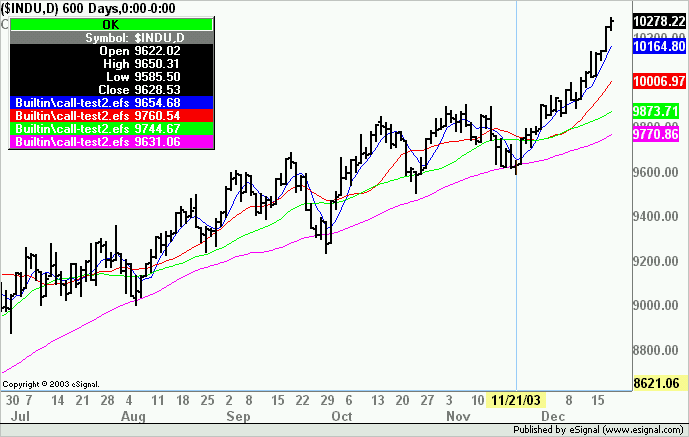Alexis,
Reference: Low Lag MACD.
Thank you for your instruction on using the BuiltIn MACD function rather than build the code to compute it separately.
I located your paper on how to use the callFunction. I am calling my LoLag Moving average with parameter passing. THANKS!
Question:
When I call it a second time with different LENGTH (30 & 50) parameters, it continues to use the original values (10 & 20).
The two external calls:
var vMAofMA1 = callFunction("/EDs Formulas/LoLagCallFn.efs","main", 10, 20);
debugPrint(" MA1= ", vMAofMA1, "\n");
var vMAofMA2 = callFunction("/EDs Formulas/LoLagCallFn.efs","main", 30, 50);
debugPrint(" MA2= ", vMAofMA2, "\n", "\n");
The results from the debugPrint statements show that the Length inputs don't change. Also the chart only shows one trace, rather than two.
Thank You,
#549584 - Ed Hoopes - [email protected]
Reference: Low Lag MACD.
Thank you for your instruction on using the BuiltIn MACD function rather than build the code to compute it separately.
I located your paper on how to use the callFunction. I am calling my LoLag Moving average with parameter passing. THANKS!
Question:
When I call it a second time with different LENGTH (30 & 50) parameters, it continues to use the original values (10 & 20).
The two external calls:
var vMAofMA1 = callFunction("/EDs Formulas/LoLagCallFn.efs","main", 10, 20);
debugPrint(" MA1= ", vMAofMA1, "\n");
var vMAofMA2 = callFunction("/EDs Formulas/LoLagCallFn.efs","main", 30, 50);
debugPrint(" MA2= ", vMAofMA2, "\n", "\n");
The results from the debugPrint statements show that the Length inputs don't change. Also the chart only shows one trace, rather than two.
Thank You,
#549584 - Ed Hoopes - [email protected]

Comment